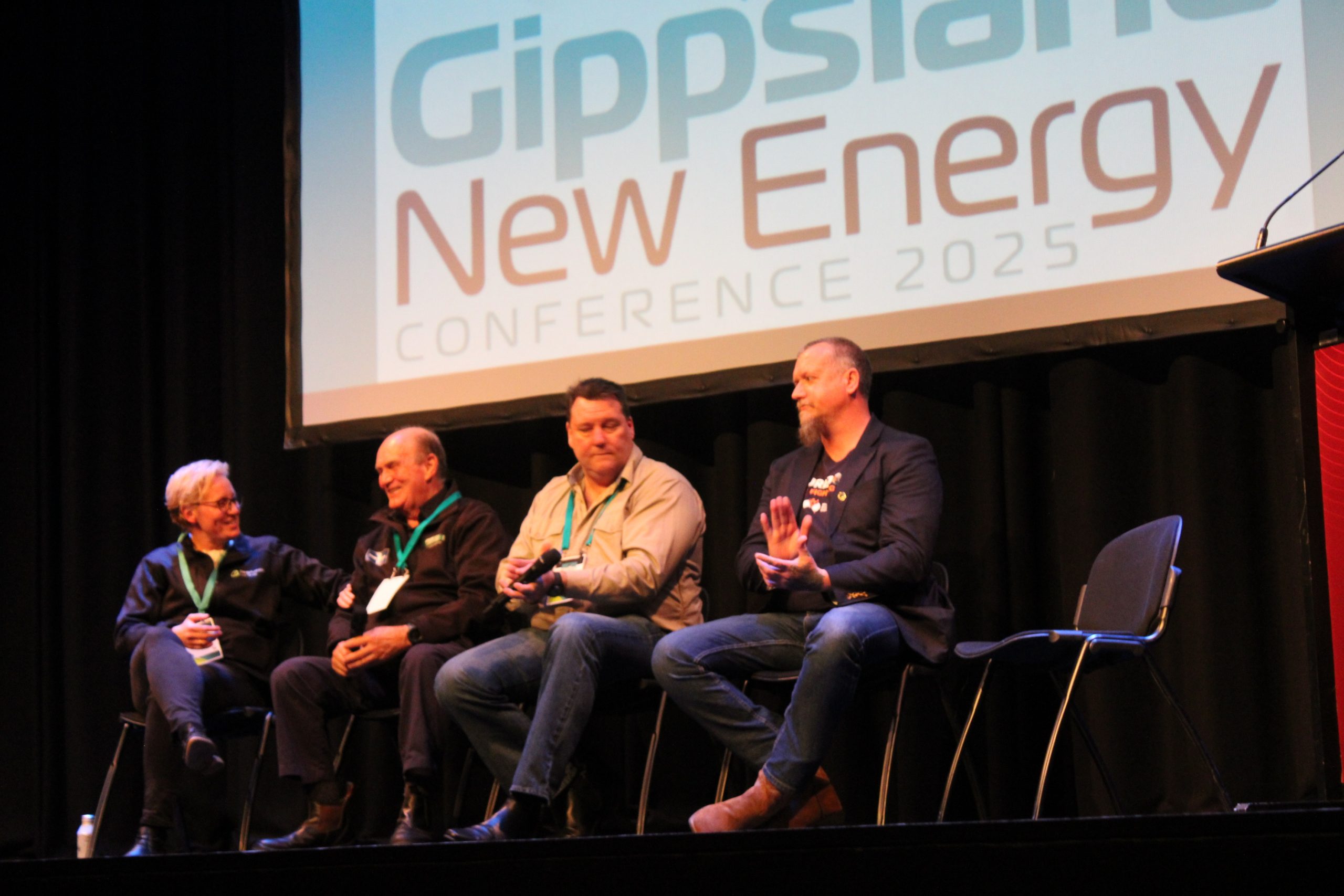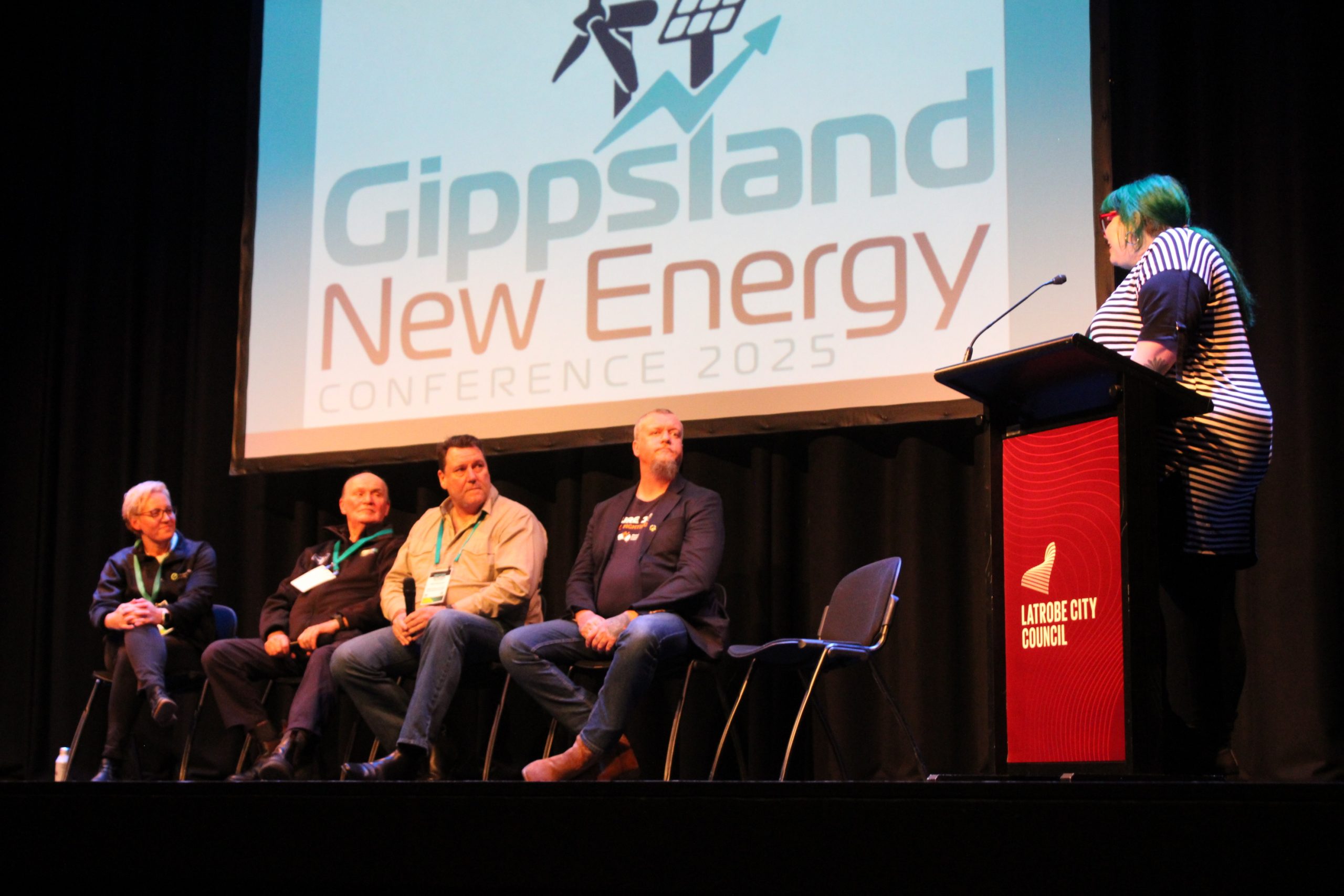By PHILIP HOPKINS
THE Mining Energy Union has cut through claims about Gippsland’s energy transition with a strong statement: renewables will never replace the jobs lost in the Latrobe Valley’s coal-fired power stations and the Gippsland offshore wind industry will not be ready to operate when Yallourn closes in 2028.
The union’s President, Andy Smith, speaking at the Gippsland New Energy Conference in Traralgon last week, slammed the state government’s inaction in the Latrobe Valley, but emphasised he was not against renewables. He also cast doubt on the wisdom of filling the Valley’s mine voids with pit lakes.
Mr Smith was one of four speakers at a conference session that dealt with the future of jobs in the energy transition. Other speakers were Lisa Gooding, Yallourn Transition Leader at Energy Australia; Steve Dodd, the Secretary of the Gippsland Trades and Labour Council; and Adam Monument, Business Operations Manager at Earthworker Energy, a Morwell manufacturing company.
Mr Smith’s comments were sparked by a question about the timing of the energy transition, which led to a mild spar with Ms Gooding, who gave a comprehensive overview of Energy Australia’s program to retrain Yallourn workers for new jobs.
Ms Gooding said EnergyAustralia had done a lot of work with offshore wind industry, looking at how to transform roles in the coal-fired power station to offshore wind.
The company found it would take on average six months to train the top roles at Yallourn – mine operators, station workers, boilermakers, mechanical fitters and engineers – to work in offshore wind.
“We are still waiting for contracts to see whether we will have an offshore industry, but there is an opportunity in that field,” she said.
Closer to home, there was the Wooreen battery in the Valley, and Yallourn workers’ number one favoured future occupation was project management.
There were opportunities at Wooreen and a similar project in South Australia – on the job experience “they can take elsewhere” Ms Gooding said batteries were new technology in which no one has experience.
“The skills sets to install batteries already exist in coal-fired power station – a huge synergy that already exists,” she said. Mr Smith replied: “I have a lot of respect for Lisa and she is an excellent manager, but that was a very corporate answer all the same. With all respect … it may be a six-month bridging course to qualify for offshore wind,” he said, but of offshore wind companies with a licence, “not one of them has an operations date slated before 2032 – 2032 is the operational date for all these operations. “You can do a six-months course but you will be waiting until 2032/33 before you can actually work in it,” he said.
He then turned to the number of jobs.
“I’m a firm believer in renewables, they are part of the future, but they are not the future right now. On top of that, the number of jobs involved in renewables is low, to put it bluntly,” Mr Smith said.
A recent battery project not far from Churchill involved 50 or 60 jobs at peak of construction; they got the job done and moved on. Similarly, only one person was employed at the Hazelwood big battery.
“Move into offshore wind construction – those are big Lego parts brought in from overseas – highly specialised work. They’re not pulling people off the Gippsland streets to do those jobs – they bring them with them. The wind farms are put together relatively quickly for the size of the things, but there are minimal jobs in that as well,” he said.
Similarly, with the onshore Delburn wind farm – a couple of hundred jobs in construction, but when completed, a crew of five or six maintenance workers who will go to a wind farm and circle back around.

Mr Smith said he did not oppose renewables.
“You would have to be an idiot to not think they are part of the future – but the number of jobs within renewable energy will never match the number of jobs in the coal-fired industry at present,” he said.
“That is not renewable energy’s fault – that is how it’s designed. Any new technology is better and more efficient than old technology – when something is more efficient and better, it requires fewer people to use it, and that’s a fact, unfortunately.”
Mr Dodd also said there were lots of claims about jobs in renewables.
“It’s a bit of creative accounting – I’d like them to do my tax,” he quipped, adding: “Even when the jobs are finished, there will not be many jobs there. What we need to be doing is making a really good manufacturing industry in this region – permanent, highly skilled and well paid jobs.”
Mr Smith said mine rehabilitation was spoken about enough in the transition.
“Rehabilitation more than likely will be the single largest employer moving forward,” he said, both at Yallourn, Morwell and Loy Yang.
“At Hazelwood, it’s a major source of work now.”
Ms Gooding answered: “I respect you as well! In terms of mine rehabilitation, there are jobs in that and in decommissioning as well. They are not long-term jobs. If you are able to fill the mine with water, we can stabilise the landform and build new energy and industries,” she said.
“That will be better for your members than working in the mine six months of the year just holding the fort until we wait for approval for our rehabilitation plans. The focus on long-term jobs.”
Mr Smith replied: “Fair enough … we’re talking about pit lakes – I don’t see pit takes as being beneficial.”
Ms Gooding said pit lakes were a huge asset for the region – in terms of flood mitigation, flood flows, helping downstream farmers in drought by releasing flows down the river, or at Hazelwood, stopping threats to Morwell.











